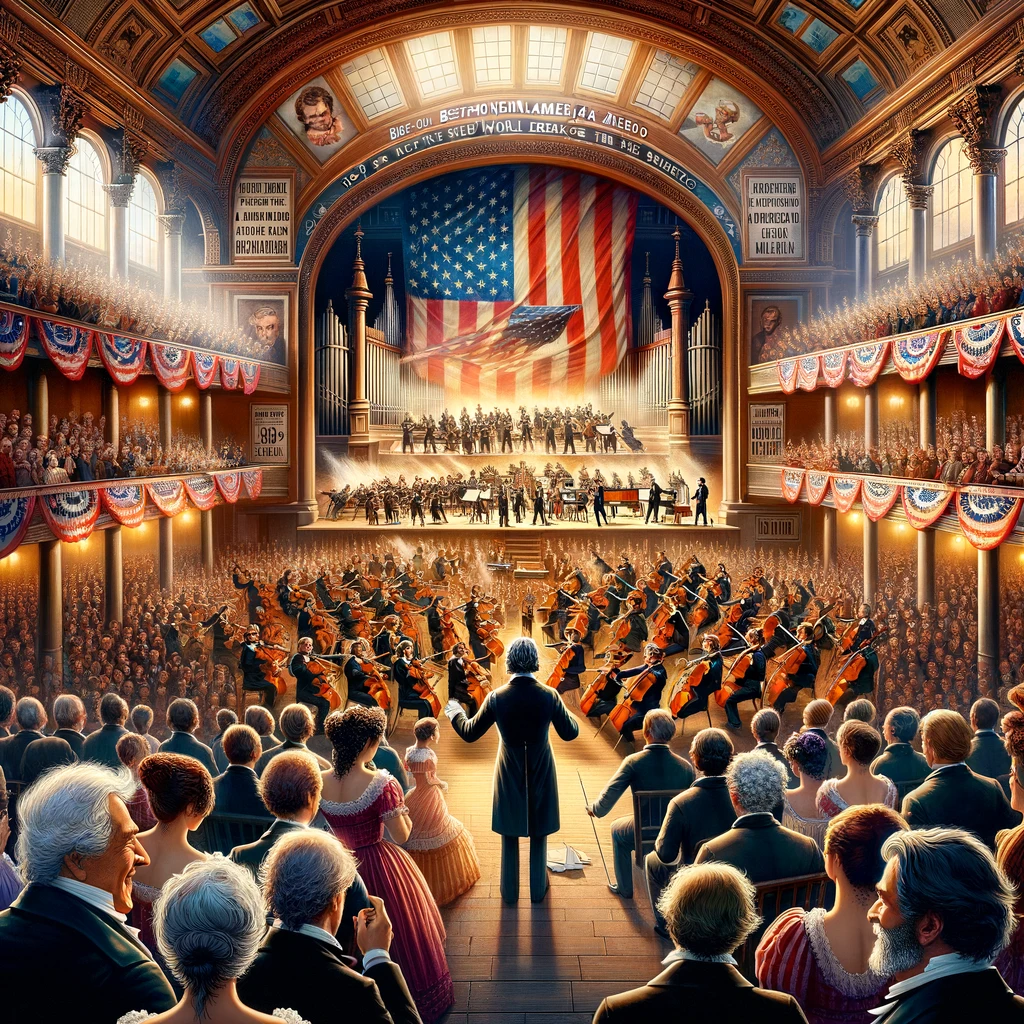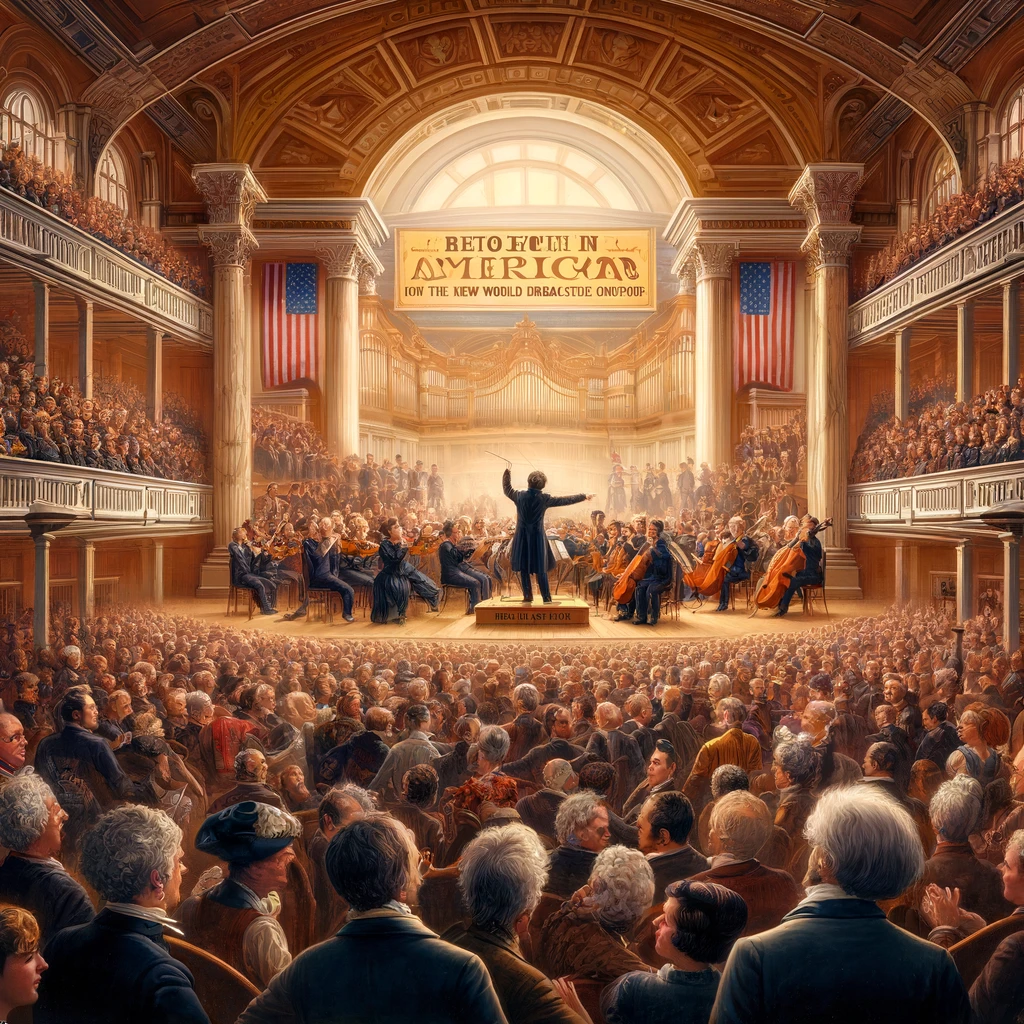
Beethoven in America: His Influence Unveiled
Ludwig van Beethoven, a towering figure in classical music, has left an indelible mark not only in Europe but also across the Atlantic in America. His compositions, transcending time and cultural boundaries, have deeply influenced the American musical and cultural scenes. This article explores how Beethoven’s legacy found a new home in America, becoming a staple in concert halls, influencing prominent American composers, and being a symbol of resilience and innovation.
The Early American Encounter with Beethoven
The journey of Beethoven’s music into America began in the early 19th century, when the United States was still establishing its cultural identity. At this time, European music and musicians were highly regarded in America, and Beethoven’s works quickly captivated the growing audience for classical music. His music was first introduced in public concerts and private salons, where it was performed by both visiting and local musicians.
By the mid-19th century, as American cities began to establish their own orchestras, Beethoven’s symphonies became a core part of their repertoires. The New York Philharmonic, founded in 1842, performed Beethoven’s symphonies regularly. His influence was so pervasive that by the end of the 19th century, Beethoven had become synonymous with the idea of the symphony in America.
Beethoven and American Composers
American composers were not just passive recipients of Beethoven’s genius; they actively engaged with his work, drawing inspiration to form a distinctly American sound. Composers like Leonard Bernstein, Aaron Copland, and George Gershwin were influenced by Beethoven’s structural rigor, thematic development, and emotional depth. Bernstein, in particular, often spoke about Beethoven in his lectures and writings, emphasizing his innovative symphonic form and expressive content.
Bernstein’s “Kaddish” Symphony, for example, echoes the dramatic and narrative style of Beethoven’s Ninth Symphony, aiming to communicate profound messages about humanity, much like Beethoven did. Similarly, Copland’s incorporation of American folk elements into classical structures can be seen as a parallel to Beethoven’s use of Germanic folk themes.
Beethoven’s Symbolic Resonance in America
Beyond the concert hall, Beethoven’s music also took on symbolic meanings in America. During times of societal change and upheaval, such as during the Civil Rights Movement, Beethoven’s music was performed at key moments to symbolize struggle and eventual triumph. His “Ode to Joy” from the Ninth Symphony has been particularly resonant, performed to evoke unity and brotherhood during significant events.
Moreover, Beethoven’s personal story of overcoming adversity, notably his battle with deafness, resonated deeply with American values of perseverance and self-reliance. His life and works have frequently been referenced in American literature, speeches, and popular media, underscoring his role as a symbol of triumph over adversity.
Beethoven in American Education and Popular Culture
Beethoven’s impact extends into American educational systems, where his music is a fundamental part of music education. Schoolchildren across the country are introduced to his symphonies and sonatas, learning not only about music theory and history but also about the ethos of innovation and emotional expression.
In popular culture, Beethoven’s music has appeared in numerous films, commercials, and television shows, further embedding his compositions in the American consciousness. Films like “Immortal Beloved” and “A Clockwork Orange” use his music to enhance their narratives, showcasing his continued relevance in modern storytelling.
Beethoven’s music, embodying universal themes of struggle, triumph, and the human condition, has found a fertile ground in America. From the concert halls and academic institutions to the broader cultural landscape, his influence is pervasive and enduring. As America continues to evolve, so too does the interpretation and appreciation of Beethoven’s works, ensuring that his legacy will remain vibrant and relevant in the American cultural fabric.
This journey of Beethoven in America not only shows the power of music to cross geographical and temporal boundaries but also highlights the unique American ability to blend diverse cultural influences into a cohesive and dynamic whole. Beethoven’s legacy in America is a testament to the enduring power of art to inspire, influence, and inform national and cultural identity.

Beethoven Festivals and Celebrations in America
In addition to his pervasive influence on American music and culture, Beethoven’s legacy is celebrated through various festivals and dedicated events that attract audiences nationwide. The Beethoven Festival in Bonn, Germany, may be the most famous, but numerous American cities host their own events that honor the composer’s enduring impact. For instance, the Chicago Symphony Orchestra often features annual Beethoven festivals that showcase his complete symphonies, drawing large crowds and fostering a deeper appreciation for classical music.
Similarly, educational institutions and conservatories across the United States hold master classes, seminars, and recitals focused on Beethoven’s works. These events not only celebrate his music but also educate new generations of musicians and audiences about his innovative techniques and the historical context of his compositions.
Beethoven’s Influence on American Musical Innovations
The technical mastery and emotional depth of Beethoven’s music have inspired American musical innovations across various genres. Jazz musicians have adapted Beethoven’s motifs and harmonies, integrating them into the jazz idiom to create new, hybrid forms. For example, the use of Beethoven’s motifs in jazz compositions is evident in the works of Duke Ellington and other jazz giants who have occasionally fused classical elements into their compositions to create complex, rich textures.
In the world of film music, composers such as John Williams have acknowledged the influence of Beethoven on their work. Williams’ epic scores, which carry the emotional and thematic weight of the narratives they accompany, reflect the grandeur and intensity found in Beethoven’s symphonies. This blending of classical influences with contemporary media underscores the versatility and timelessness of Beethoven’s music.
The American Recording and Preservation of Beethoven’s Works
The preservation and recording of Beethoven’s works have been a significant part of America’s contribution to global classical music culture. Pioneering recordings made by American orchestras have been critical in popularizing Beethoven’s music worldwide. Iconic conductors like Leonard Bernstein and Arturo Toscanini, both associated with American orchestras, made landmark recordings that brought a distinctively American interpretation to Beethoven’s symphonies, helping to shape how they are perceived globally.
In addition to commercial recordings, there are numerous archival projects and scholarly initiatives in the United States focused on studying and preserving Beethoven’s manuscripts and historical performances. These efforts ensure that both the authentic spirit and the innovative potential of his music continue to inspire and educate.
Reflections on Beethoven’s Universal Appeal
The universal appeal of Beethoven’s music in America underscores a broader narrative about the power of cultural exchange and the global language of music. Beethoven speaks to universal themes — the triumph of the human spirit, the struggle against adversity, and the pursuit of artistic freedom — which resonate deeply with American ideals.
As we reflect on Beethoven’s impact in America, it is clear that his music does more than just fill concert halls; it stimulates dialogue about shared human experiences and the transformative power of art. In embracing Beethoven, America has woven a rich tapestry of musical heritage that continues to evolve and inspire generations.
Through concerts, educational programs, recordings, and cultural celebrations, America has not only preserved Beethoven’s legacy but has also contributed to its dynamic reinterpretation. As long as there are audiences to be moved and musicians to be inspired, Beethoven’s music will remain an integral part of America’s cultural landscape, continuing to inspire and challenge listeners with its timeless relevance and profound beauty.
References
- Cooper, Barry. “Beethoven.” Oxford University Press, 2008.
- Kinderman, William. “Beethoven.” University of California Press, 1997.
- Lockwood, Lewis. “Beethoven: The Music and the Life.” W. W. Norton & Company, 2005.
- Solomon, Maynard. “Beethoven Essays.” Harvard University Press, 1988.
- Swafford, Jan. “Beethoven: Anguish and Triumph.” Houghton Mifflin Harcourt, 2014.
- Drabkin, William. “Beethoven’s Pianoforte Sonatas: A Guide for Students & Amateurs.” Yale University Press, 2007.
- Kerman, Joseph, and Alan Tyson. “The New Grove Beethoven.” W. W. Norton & Company, 1983.
- Plantinga, Leon. “Beethoven: Impressions by His Contemporaries.” Dover Publications, 1987.
- Rosen, Charles. “The Classical Style: Haydn, Mozart, Beethoven.” W. W. Norton & Company, 1997.
- Tovey, Donald Francis. “Essays in Musical Analysis: Symphonies and Other Orchestral Works.” Oxford University Press, 1935.